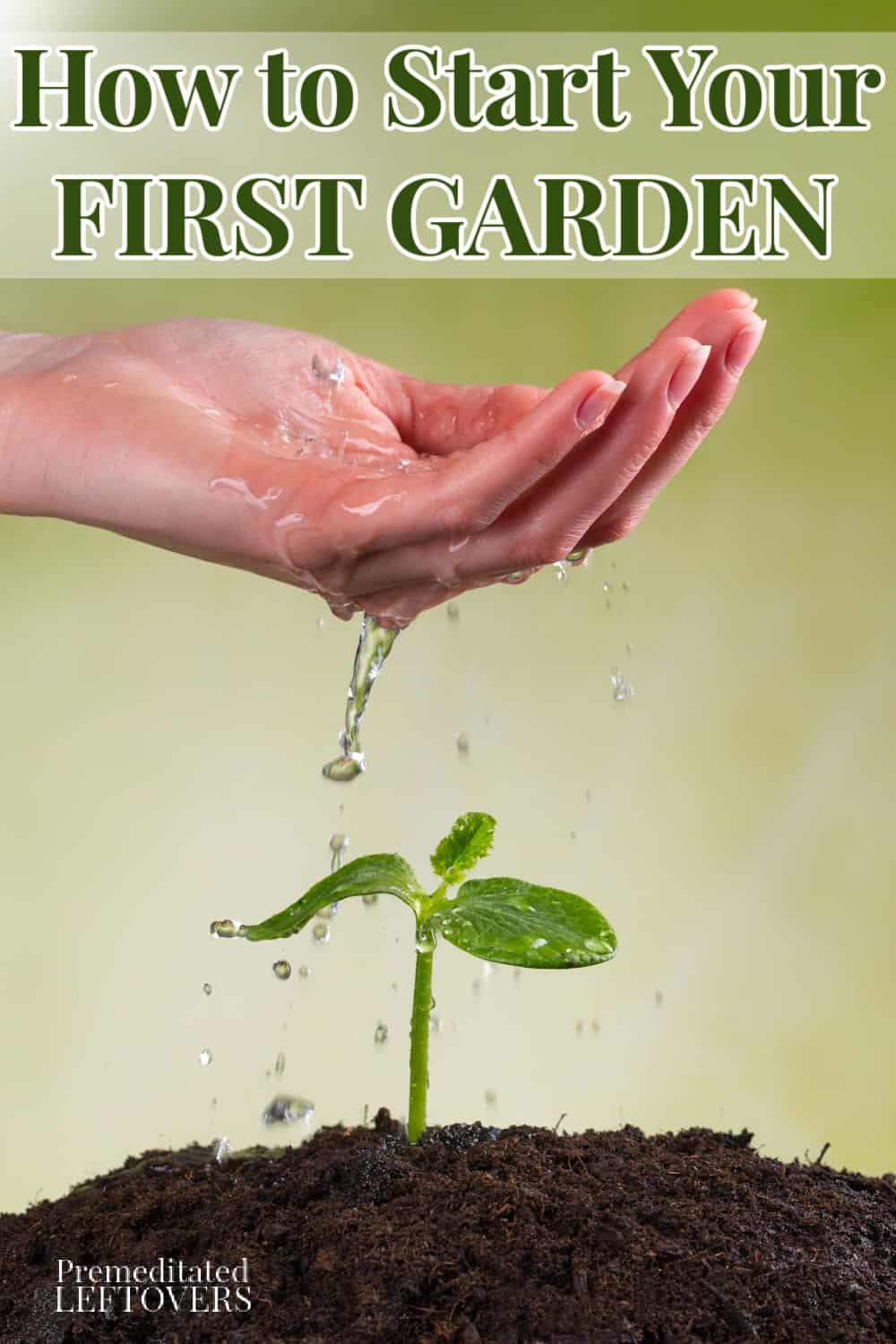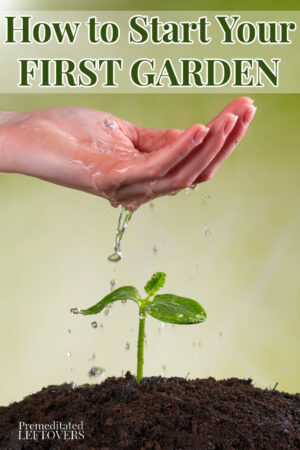Are you a first-time gardener? Use the tips on how to start your first garden to successfully grow vegetables in your backyard this summer.

Ready to start your first garden? You might feel overwhelmed at first, but once you get the hang of it, you’ll be enjoying everything your new garden has to offer!
How to Start Your First Garden
There are lots of gardening tips out there, but these are designed to show you how to start your first garden and hopefully have a successful year of gardening!
1. Do your research!
Seriously, this is the biggest step in your journey to start your first garden. Research is so important in this stage. Find out what zone you live in, what plants grow best, and what plants don’t do well. This is all important information and by reading this you can save yourself a lot of time and money!
Once you know your gardening zone, you will be able to use the back of seed packets to find out when to start seeds in your area.
If you are getting a late start on your garden, you might want to buy seedlings at a local nursery for some of the vegetables that take longer to produce such as tomatoes and peppers. And then start some of the fast-growing vegetables such as radishes and zucchini from seed. Here are some of the most popular vegetables to grow in a garden.
You can download this free garden planner to make plans and keep track of what you are growing.
2. Determine where you are going to grow your plants.
Most vegetables need a full day of sun. Choose a location to place your garden.
It’s also important to know if you’re going to grow your garden in a garden bed, square foot garden, or container garden. Keep in mind that while you’re new to gardening and learning the ropes, container gardening is a great option because it lets you adjust things like sunlight exposure and shade time.
3. Buy all the supplies you’ll need beforehand.
You will need a trowel and seeds or seedlings. You may also need soil amendments and a sprinkler or drip system to water your garden. Making sure you have everything you need beforehand is a great way to ensure your success. If you have the chance, look for sales while you’re at it! Home Depot, Walmart, and your local nurseries often have deals. In fact, it’s a great idea to stop by a local nursery when you first start gardening to get some help, ideas, tricks, and general information that is specific to your region! Local nurseries are a great resource for information, and if you ever have a question, they’re a good place to ask.
4. Make adjustments along the way.
Keep your seed packets. You will find information on them for caring for your plants, but that information is just a guideline. You’ll need to make adjustments based on how your plants are reacting to the environment. Is the sun too much? Are they being watered enough/too much? These are all things you’ll have to ask yourself every day and keep making small adjustments until you find a sweet spot! If you see a plant starting to wilt or change colors, fear not! A simple Google search will lead you to everything you need to know about your plant so that you can take care of it accordingly!
5. Keep growing!
If you’re like most gardeners, you’ll find that having your own garden is very rewarding and definitely worth the time and effort. If you’re growing lots of vegetables, add some flowering plants to attract bees to pollinate things in your garden. Here are more tips for attracting bees. If you’re enjoying it, don’t be afraid to keep adding more plants to your garden with succession gardening if the weather permits!
6. Never stop researching!
This is the most important thing. Research is crucial at the beginning when you are developing your garden, but continuing to research will help you become a better gardener! It’s not necessary to have a green thumb, just know how to use your fingertips to access the information you need and you’ll be set!
What are you planning on planting in your first garden? Let me know in the comments below!
More Tips for Beginning Gardeners:
7 Best Vegetables for Beginning Gardeners
Gardening Tips for Small Spaces


Leave a Reply